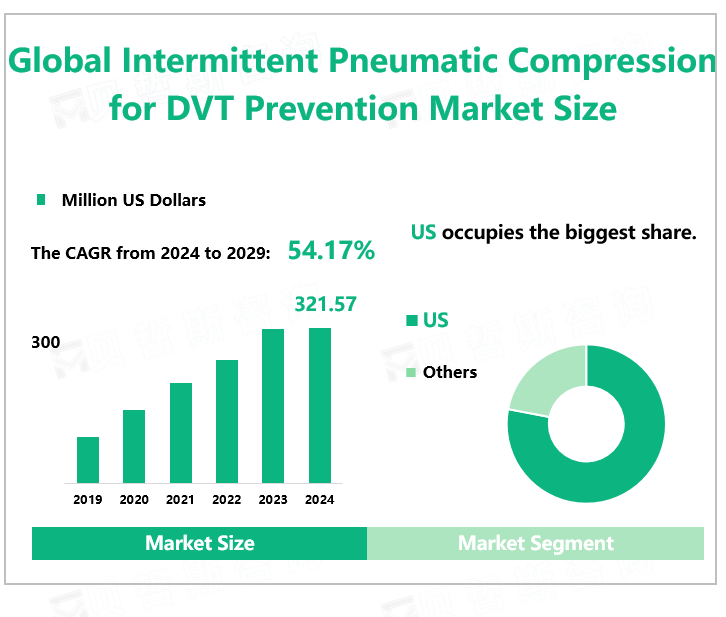Global Intermittent Pneumatic Compression for DVT PreventionMarket Overview
According to Global Market Monitor, the global intermittent pneumatic compression for DVT prevention market size will reach $321.57 million in 2024 with a CAGR of 54.17% from 2024 to 2029.
The Incidence of Venous Embolism is High
Intermittent pneumatic compression (IPC) devices are used to help prevent blood clots in the deep veins of the legs. The devices use cuffs around the legs that fill with air and squeeze your legs. This increases blood flow through the veins of your legs and helps prevent blood clots.
The increase in surgical procedures, such as hip and knee arthroplasty, increases the risk of DVT, thereby exacerbating the need for Intermittent Pneumatic Compression. Surgery usually results in long periods of inconvenience and increases the chance of developing DVT due to reduced blood flow. According to reports, more than one million Americans undergo joint replacement surgery each year.
After varicose vein removal, light-assisted angioplasty, and radiofrequency ablation for varicose veins, the doctor may prescribe a compression stocking that relieves pain and swelling. As the number of surgeries increases, there is an increasing chance of a thromboembolic event requiring treatment with intermittent pneumatic compression.

Market Drivers
Due to the use of intermittent pneumatic compression in a variety of applications, it is expected to have a positive impact on the market. Continuous calf compression and progressive compression stockings are increasingly being used in the prevention of neurosurgery to prevent PE and DVT. In addition, during prolonged laparoscopic surgery, an intraoperative sequential compression device system is recommended to cope with changes in venous return in the lower extremities and cardiac depression due to pneumoperitoneum. By sequential compression, such as restoring edge treatment, each cycle continuously unloads the venous system over 30-40 seconds, thereby moving a large amount of blood and waste.
According to the CDC 2016 survey, more than 29 million people in the United States have diabetes and 86 million have pre-diabetes. The increased incidence of diabetes increases internal risk factors such as swelling of the legs, ankles, and feet, which can lead to venous diseases. The increase in the incidence of diabetes and other related chronic diseases has in turn increased the number of patients, thus driving the growth of the compression therapy market.
|
S |
Increased surgical procedure Market demand continues to grow Increasingly adopted Intermittent pneumatic compression |
|
W |
The threat of anticoagulant Intermittent Pneumatic Compression for DVT Prevention is very expensive |
|
O |
R&D investment increases Diabetes and elderly population growth Increase in per capita disposable income |
|
T |
High labor cost Fierce competition from international companies |
We provide more professional and intelligent market reports to complement your business decisions.